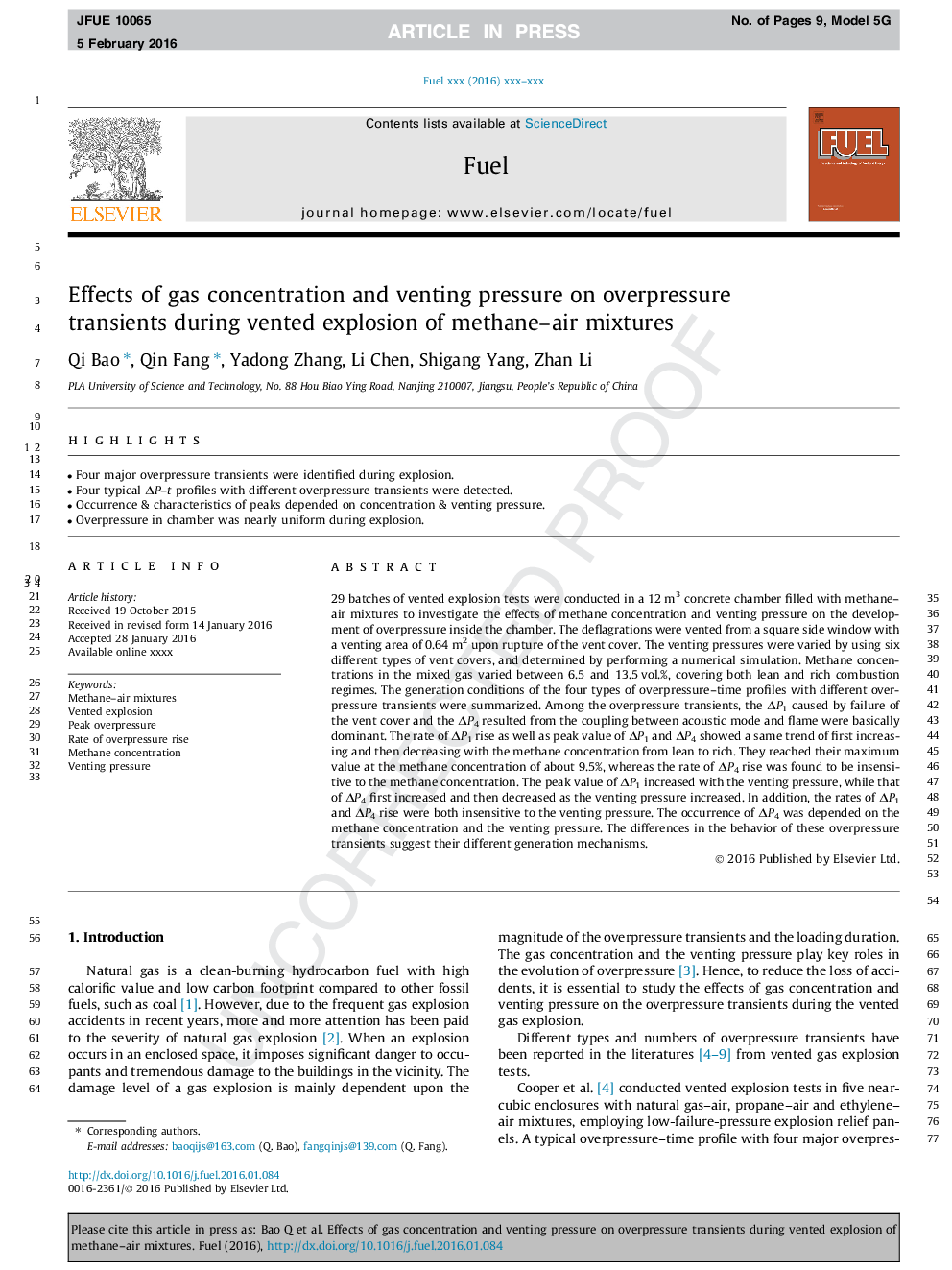| Article ID | Journal | Published Year | Pages | File Type |
|---|---|---|---|---|
| 6633991 | Fuel | 2016 | 9 Pages |
Abstract
29 batches of vented explosion tests were conducted in a 12Â m3 concrete chamber filled with methane-air mixtures to investigate the effects of methane concentration and venting pressure on the development of overpressure inside the chamber. The deflagrations were vented from a square side window with a venting area of 0.64Â m2 upon rupture of the vent cover. The venting pressures were varied by using six different types of vent covers, and determined by performing a numerical simulation. Methane concentrations in the mixed gas varied between 6.5 and 13.5Â vol.%, covering both lean and rich combustion regimes. The generation conditions of the four types of overpressure-time profiles with different overpressure transients were summarized. Among the overpressure transients, the ÎP1 caused by failure of the vent cover and the ÎP4 resulted from the coupling between acoustic mode and flame were basically dominant. The rate of ÎP1 rise as well as peak value of ÎP1 and ÎP4 showed a same trend of first increasing and then decreasing with the methane concentration from lean to rich. They reached their maximum value at the methane concentration of about 9.5%, whereas the rate of ÎP4 rise was found to be insensitive to the methane concentration. The peak value of ÎP1 increased with the venting pressure, while that of ÎP4 first increased and then decreased as the venting pressure increased. In addition, the rates of ÎP1 and ÎP4 rise were both insensitive to the venting pressure. The occurrence of ÎP4 was depended on the methane concentration and the venting pressure. The differences in the behavior of these overpressure transients suggest their different generation mechanisms.
Related Topics
Physical Sciences and Engineering
Chemical Engineering
Chemical Engineering (General)
Authors
Qi Bao, Qin Fang, Yadong Zhang, Li Chen, Shigang Yang, Zhan Li,
